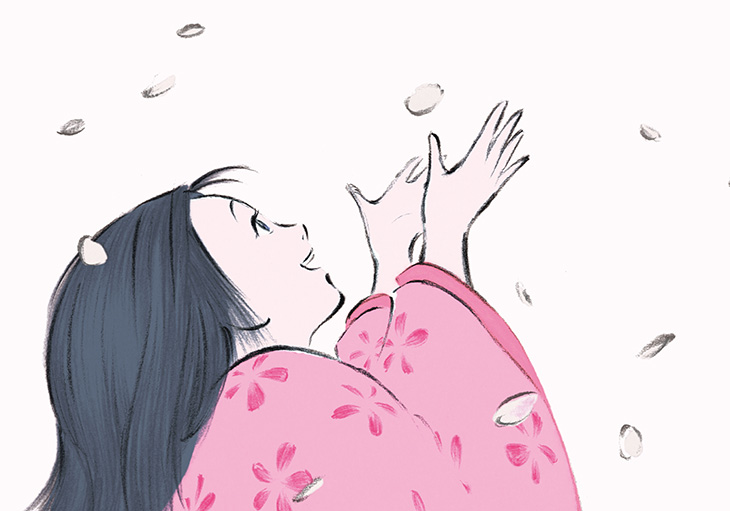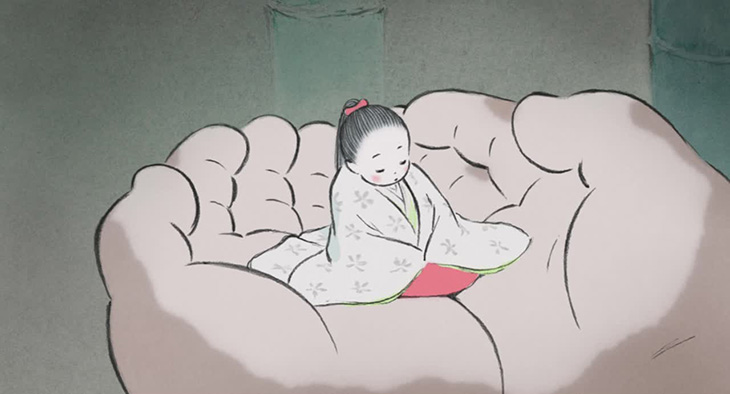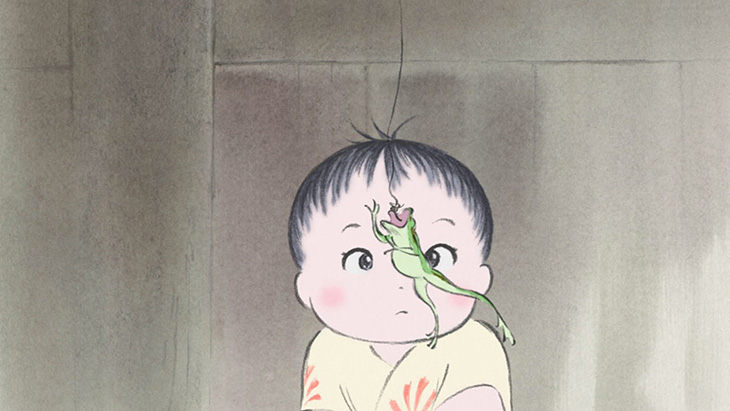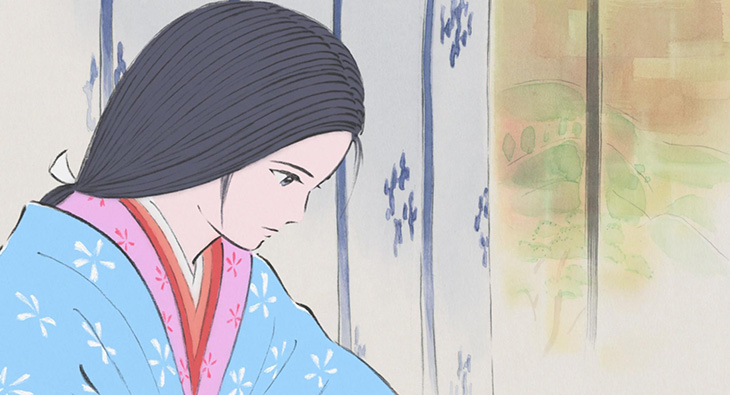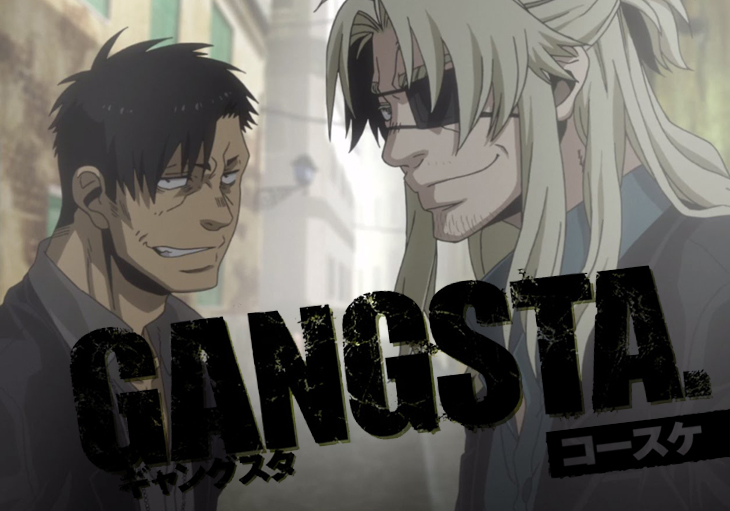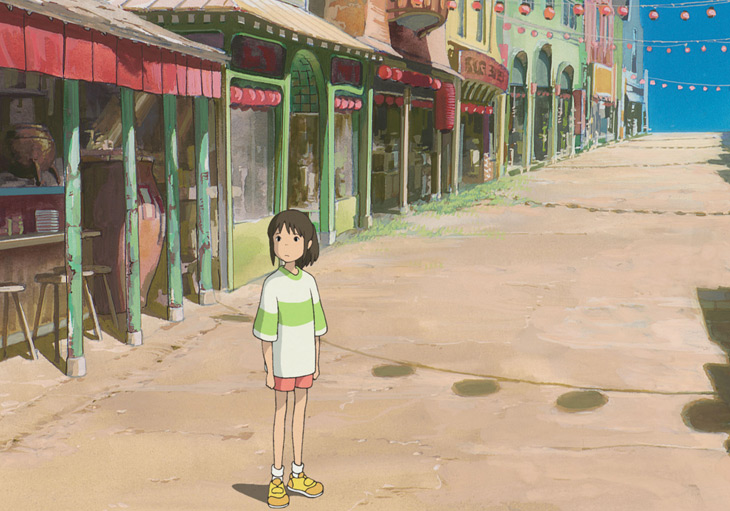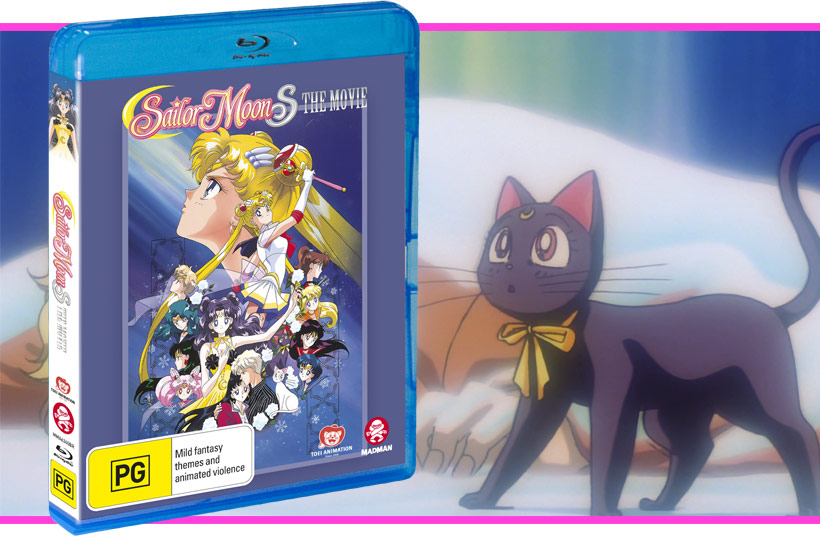With Studio Ghibli’s steady rise over the past few decades as a powerhouse in animation, everyone (including myself) had high expectations of their releases. The Tale of the Princess Kaguya surpasses all those expectations, and raised the bar to higher levels in terms of animations and storytelling. Directed, and co-written by Isao Takahata, whom you may have heard the name of from another legendary Studio Ghibli title “Grave of the Fireflies.” Like his previous title, Isao adapted the story of Princess Kaguya from a written story, this time a well known folktale of the same name from the 10th-century.
The story of The Tale of the Princess Kaguya starts with a humble bamboo woodcutter, going about his daily business of, well, cutting bamboo. He stumbles upon a bamboo shoot that glow, sprouting forth a small, doll-like figure. He surmised this being as a woodland spirit of sorts, rushing home to show his wife. Quickly, you find out that this couple is childless, farming bamboo in an isolated place, and come from a poor background. Besides all these hardships, the couple are in good spirits, and are overjoyed with this spirit in their lives. Within minutes of being introduced to the wife, this diminutive being changes into a newborn, shocking the couple, yet she cried for attention overwhelm any concern, and they quickly adopt her as their own child, naming her Hime (Prciness).
You quickly find out that Kaguya ages quickly, with short snapshots of their time together and other children in the small village. We watch her group in an incredible rate from newborn to toddler, to child. The first time anyone hears her speak is when she joins in the singing of a fold song, added verses to it, which are melancholic in tone and lyric.
The father stumbles across more things hidden within the bamboos. This time a bags worth of gold nuggets, and then fine, rich silks. He takes these as a sign that Kaguya is destined for a more refined life, compared to the poo, spartan lifestyle she has now. He takes off multiple times to acquire a household and status he believes will make her life happier.
At first she seems happy, distracted by this opulent lifestyle of a mansion and retainers. Quickly she comes to realise that her previous life is gone, overtaken by one that requires social etiquette befitting her new standing clamping down on her free will. Slowly, Kaguya becomes increasingly despondent as she ages, slowly sinking more into her studies as a refined woman to keep those around her happy.
When she comes of age, many suitors appear, clamouring for her attention and hand, reaching as far as give great nobles of the country. Thinking she can be spared unhappiness, she sends them on impossible tasks. Years pass, and although she is not happy with her life, she is content with the small garden, and weaving she does with her mother. That small bastion is shattered when the nobles return, each giving false gifts. With the death of one noble, due to trying to complete her task, Kaguya flees, blaming herself and wishing she could escape this life.
Returning to her first home, she finds people have moved in, and the villagers and children she once knew had moved away, perhaps returning within a decade. Seeing that everything has changed, she returns to find that the emperor has now taken an interest in her, which she refuses, but he continues to press. Within a moment, she comes to realise where she is from, where she is there, and that she will be taken away. Fear, sadness and desperation grip hold of not just her, but her adoptive parents, as none of them wish to be separated, caring not for status or possessions, only that they are together, as that is the happiness they had.
The ending itself, I will not get into, as it’s something that can only be expressed by watching it.
This was a profoundly impactful movie for me, and some scenes moved me to tears. It has completely shot up my list of favourite Ghibli movies, second only to Princess Mononoke. While not as heart wrenching as Grave of the Fireflies, this is an emotional pull to this film, more so than a majority of Ghibli anime. I can see that Isao likes a story that realistically portrays human emotions and their outcomes. You can draw a lot of comparisons between the two films with the adolescence of youth, society, and how maturing to adulthood means sacrificing certain aspects of your life. A big proponent to this is the folk song that is repeated through out the movie. This… melancholy song about longing. It summarises the overall tone and feeling of the movie perfectly.
Probably the biggest draw of the anime, and what I deeply appreciated, was the art style. The watercolurs had a beautiful mix of delicately being used within lines at times, but also smudged and bleeding in others Plus the brightness of watercolours effected the mood of the movie quite well. Bright and cheerful at the start, and becoming darker and dull as the story progressed. Bold lines brought out the character features beautifully, yet worked well is subtle scenes. The use of frantic drawing styles during dramatic scenes really made you believe you were watching a story book brought to life.
Overall I thought I was watching a children’d book, but for adults.
This is an anime I will be watching again, and applaud it for it’s sense of storytelling and style. Fantastic job.
A review copy was provided by Madman Entertainment to the author for the purpose of this review.

